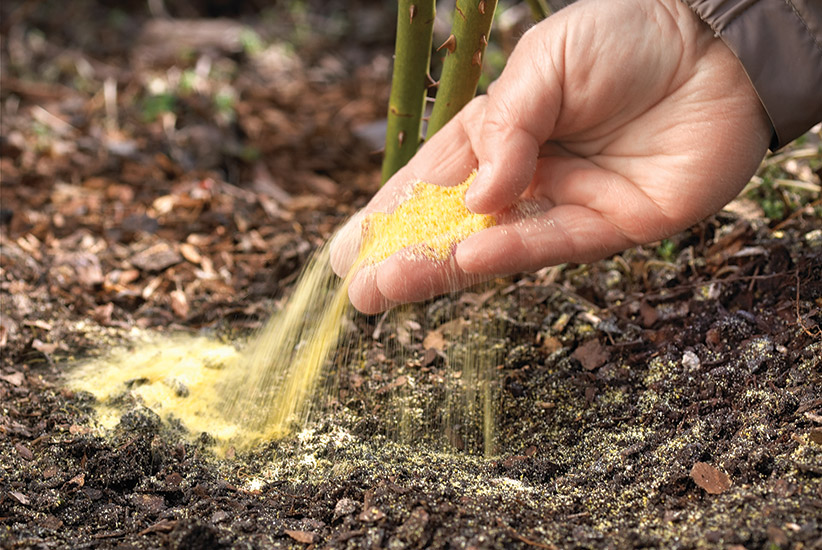Austrian pine trees are stately evergreens that add beauty and value to residential and commercial landscapes. However like any plant they can fall victim to fungal diseases like mold that detract from their appearance and potentially impact their health. Getting rid of mold on your Austrian pine requires accurately identifying the type of mold, understanding optimal treatment timing, and utilizing a combination of cultural practices and spray applications for the best control.
Recognizing Mold Symptoms
The first step in treating mold on an Austrian pine is to properly identify the type of mold infection present Common molds include
-
Powdery mildew – white, powdery coating on needles and shoots.
-
Sooty mold – black, sooty substance building up on needles.
-
Needle cast fungus – yellowing or browning of inner needles,
-
Tip blights – dieback and browning of new shoot tips.
Accurate identification guides your treatment regime. Inspect trees regularly to catch issues early before they intensify.
Improving Cultural Practices
Adjusting your care regime can help deter mold growth:
-
Prune branches with infected needles to reduce spore spread.
-
Thin dense growth to enhance air circulation and light penetration.
-
Ensure proper spacing between trees.
-
Avoid overwatering and promote drainage.
-
Apply mulch to regulate soil moisture and humidity.
-
Fertilize appropriately to maintain tree health.
Using Fungicidal Sprays
For moderate or severe mold, fungicides are required:
-
Copper-based products inhibit spore production and growth.
-
Chlorothalonil disrupts metabolic processes in fungal cells.
-
Propiconazole interferes with cell membrane formation.
-
Neem oil deter fungal infections.
Follow all label instructions carefully. Test on small sections first and alternate chemistry for resistance management.
Timing Treatments
-
Early spring – Apply dormant spray before buds break to control overwintering spores.
-
Spring – Treat when new needles emerge to prevent infection. Make a follow-up application 3 weeks later.
-
Summer – Monitor weekly and spot treat any lesions to limit spread.
-
Fall – Spray again just before senescence when trees are most vulnerable.
Preventing Mold in the First Place
An ounce of prevention is truly worth a pound of cure when dealing with mold in Austrian pines:
-
Select resistant cultivars if available.
-
Space trees appropriately for your region and site conditions.
-
Prune annually to enhance air flow and light penetration.
-
Water early in the day so foliage dries quickly.
-
Apply preventative fungicides ahead of spore release.
-
Eliminate weeds and leaf litter under trees.
-
Monitor weekly and treat issues immediately before they intensify.
Enjoy Healthy, Mold-Free Austrian Pines
Unchecked mold can quickly disfigure and even kill susceptible Austrian pines. By accurately identifying the mold, improving cultural practices, applying fungicides at strategic times, and utilizing prevention strategies, you can successfully eliminate mold and protect your trees. Keeping Austrian pines healthy and mold-free enhances the beauty of these magnificent landscape specimens for years to come.

How does Dothistroma needle blight survive and spread? Needle spots, bands and dead needle tips from Dothistroma needle blight
- Dothistroma needle blight is caused by the fungus Dothistroma septosporum (syn. Mycosphaerella pini).
- Dothistroma needle blight is a slow-moving disease that takes over a full year to complete its life cycle. It takes several years of repeated infection to develop into a serious problem within the tree canopy.
- Spores are produced on infected needles throughout the growing season whenever cool, wet weather occurs.
- Spores are spread by wind or rain to needles within the same tree or in neighboring trees.
- Infection occurs if spores land on susceptible needles under favorable weather conditions.
- Second year or older needles are susceptible to infection anytime during the growing season.
- Young needles are resistant until they reach maturity in early to mid summer.
- Several consecutive days of cool (41-77°F), wet weather are needed for successful infection.
- Reddish brown spots or bands appear on needles in the fall.
- Needle spots eventually girdle the pine needle. The needle beyond the band then dies and turns brown leaving the bottom portion of the needle green.
- Tiny black fungal fruiting bodies called stromata appear in the bands or in dead areas of the needles. These fruiting bodies will release spores the following year.
- Infected needles may remain attached to the tree for one or two years depending on the age of the needle at the time of the infection.
- Eventually infected needles turn completely brown and fall off prematurely.
How to manage Dothistroma needle blight Needle spots on one year old needles and needle tip death on two year old needles
- Do not overcrowd plants. Use the mature size of the tree as a spacing guide when planting.
- Remove the bottom most branches from the trunk to help increase circulation around the tree canopy.
- Remove all weeds under the trees.
- Maintain a 3 to 4 inch deep, even layer of wood chip mulch around your tree to prevent weed growth.
- Leave at least a 2 inch space between the mulch and the trunk to allow for air movement.
- Do not mound the mulch around the trunk of the tree.
- Inspect the depth of the mulch layer each year. Add additional mulch only to maintain a 3 to 4 inch depth.
Removing fungus on trees
FAQ
What is the fungus on Austrian pines?
How to treat fungus on a pine tree?
How do you treat powdery mildew on pine trees?
What is killing my Austrian pine trees?
